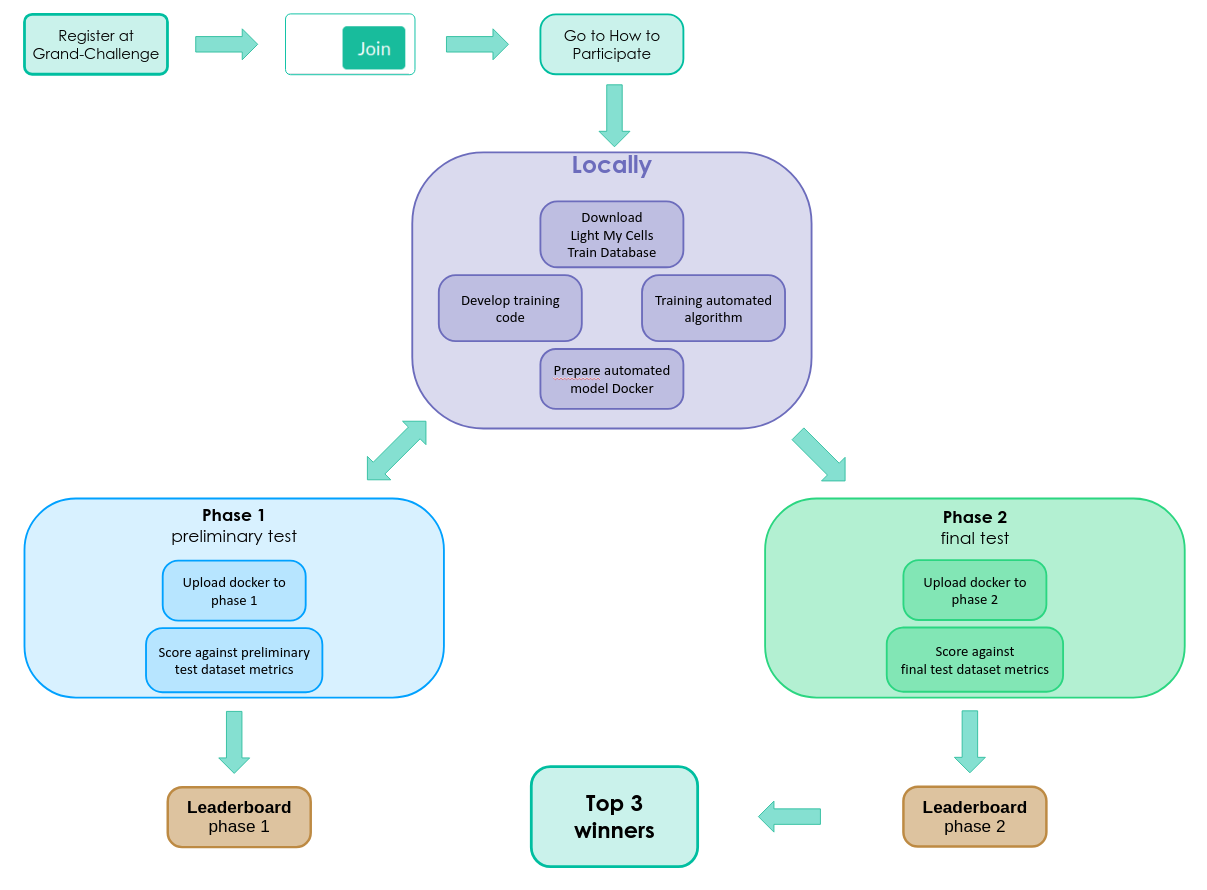💡 How to participate
We have defined the challenge as a single task with two phases:
- A preliminary test phase (on 36 images) to familiarize with the algorithm submission procedure, with the possibility to have five submissions until March 30.
- The final test phase (on 304 images) with only one submission accessible will not give the possibility to evaluate their algorithms before submitting.

Access to test case labels during the preliminary phase is restricted to the organizing team. Before and during the final phase, access remains restricted to the organizing team until the end of the challenge.
Phase 1 : preliminary test phase
- 5 submissions per team on Test Dataset 1 (36 images)
Phase 2 : final test phase
- 1 submissions per team on Test Dataset 2 (304 images)
Submissions
All participants will perform local training (and validation) before submitting to the test phases. For both phases, participants will submit their algorithm in docker format to Grand-challenge.org, where metrics will automatically evaluate predictions on secret test datasets and rank participants.
When submitting, participants will have two choices:
- Submit open source code (Recommended)
- only submit the inference part including the saved trained model (in h5 format) (in which case it will not be eligible for prizes)
In all cases, algorithms must predict and produce the best fluorescence Z-focus image of all four organelle channels with the same image size as the input image and in OME-TIFF format.
All dockers will be stored and accessible on Grand-Challenges.org.
In addition, we will suggest that participants provide a link (which will be accessible on our challenge page on Grand-Challenges.org) to their source code in a public repository (e.g. GitHub, Gitlab, etc.).
For non-free software, we cannot provide an accessible link to their code, but we will link to the corresponding company.
